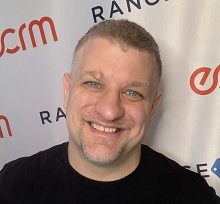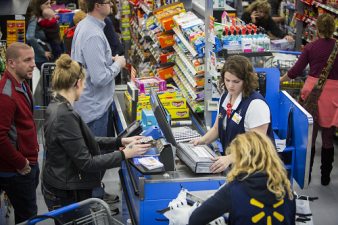The Convergence of Convenience and Impulse at the Checkout 3/31/2017
The difference between a convenience purchase and an impulse purchase is that the former involves a product that you want to buy RIGHT NOW, whereas the latter also involves a product you want to buy RIGHT NOW, only you weren’t planning to.
At ECRM’s recent Convenience EPPS and Impulse, Front-End & Checklane EPPS, we saw that many of the products sought by retailers often served both purposes, depending on their placement in the store and how they are marketed and merchandised. In some cases, they can be either/or, depending purely on the intent of the shopper.
When it comes to food and beverages, the overall trend toward wellness has certainly made its way to convenience items, with functional beverages and healthy snacks leading the way, according to attendees interviewed at the meetings. Functional beverages such as protein drinks and shots, hydration drinks and powders, and even sleep aid shots have joined the old standby energy drinks.
On the convenience food front, the demand for transparency and clean ingredients (referred to as the “Panera Effect”) has led to buyers looking for healthier options like protein snacks, nutrition bars, natural and organic products, as well as vegan options. Indeed, the wellness trend has made its way from the perimeter, to the center store, and now to the checkout. And the mix in convenience stores continues to get healthier. Sure, you can still get a Slurpee at your local 7-Eleven, but you can also pick up a fruit salad, as well. And the front-end checkout at my local grocer has some candy, but also bulk nuts as well.
That’s not to say that the old front-end standbys of candy, beverages and magazines are not in demand. They continue to remain the power categories at the front-end, according to research presented by Bill Romollino, VP of Customer Development for Time, Inc., but healthy items like meat snacks and nuts are gaining in popularity, and should be included in the front end mix. And as Frank Bishop, SVP of Sales for Innovative Fixture Solutions pointed out in that same presentation, there are many flexible merchandising solutions available to accommodate these new categories as demands shift.
Among general merchandise items, gadgets, cell phone accessories like portable chargers and power cords are among the items retail buyers say they are looking for. These are also the items where there is a lot of overlap between convenience and impulse. I may walk into my local convenience store to pick up that iPhone charger I forgot to take with me on a trip, but then I just can’t resist picking up that Hello Kitty phone case on display at the checkout. HBC items, too, have found there way into this area of the store, with items like lip balm, hand sanitizer and some OTC products.
Impulse Products
When it comes to impulse, it’s more of an emotional purchase, and ECRM Keynoter Bill Carmody, during his presentation at the EPPS, provided some great insights on how most impulse purchases can be linked to addressing one of the six human needs that drive all human behavior. (The Six Human Needs concept was developed by personal growth guru Tony Robbins, and Bill often serves as a volunteer instructor at his events).
These six human needs are: Certainty, Variety, Significance, Love & Connection, Growth, and Contribution (to others or to a cause)
At different phases of the shopper’s journey, consumers are open to considering products based on the fulfillment of one or more of these human needs, and by tailoring the marketing of your products to them, you can drive impulse purchases.
So for example, the two winners of the ECRM/MMR Buyers Choice Awards for Impulse, GPR Product Development, Danvers, Mass., and New York-based Mission, had products that address one of these needs. GPR’s beverage can “EZ-Opener/EZ Closer” is designed to open and reseal beverages in cans of all sizes, and addresses the need for Certainty – the certainty that no dirt or bugs will get into your beverage, and that it won’t spill. Mission’s portable-sized and impulse-packaged cooling towel fulfills the need for growth, as it is designed to keep you cool during workouts and so enables you to work out harder.
So the key to maximizing the impact of your front-end merchandise is to provide an assortment that both provides the typical convenience items shoppers regularly seek, while at the same time including high-impact impulse items that address many of the Six Human Needs as possible, and promote them as such.
Because while they may not need a particular item at the time, with the right messaging, you can certainly make them want to buy it.

